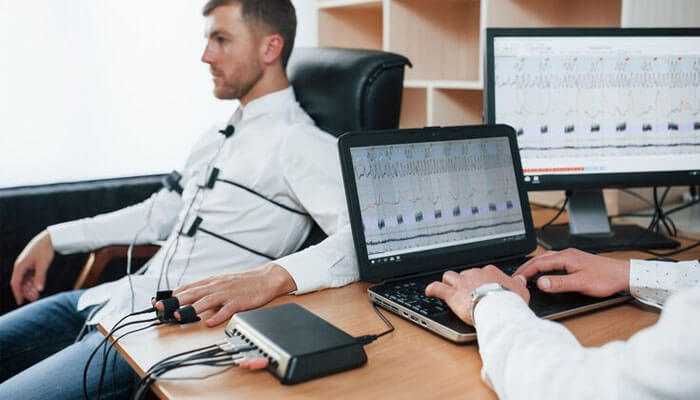Commonly referred to as a “lie detector,” polygraph testing is an instrument that measures and records several physiological indicators such as blood pressure, pulse, respiration, and skin conductivity while a person is asked and answers a series of questions.
The premise behind its use is that deceptive answers will produce physiological responses that can be differentiated from those associated with non-deceptive answers. Widely employed in a variety of contexts, polygraph testing is a useful tool. This is why it is a popular option when conducting criminal investigations, security clearance assessments, and employment screenings.
The process of polygraph testing can be broadly divided into four phases. Here is a look at the main stages of the process.
Pre-test Phase
The pre-test phase serves as the foundation for the entire polygraph examination. During this initial stage, the polygraph examiner establishes a rapport with the examinee to help them feel more at ease. This is crucial for ensuring that the examinee’s physiological responses during the test are not unduly influenced by nervousness or anxiety about the testing process itself.
The examiner also explains how the polygraph works, what types of questions will be asked, and the importance of answering truthfully. Part of this phase includes a thorough review of the test questions with the examinee. This is done to ensure that the questions are understood and to clarify any ambiguities.
The pre-test interview is also used to gather background information relevant to the test and to identify specific issues or questions that will be the focus of the polygraph examination.
Chart Collection Phase
In the chart collection phase, the examinee is connected to the polygraph machine, and the physiological sensors are attached. These sensors are designed to measure responses to questions that could indicate stress or deception. The examiner then asks a series of questions, typically including both relevant questions (pertaining to the matter under investigation) and control questions (designed to measure the examinee’s truth-telling baseline).
The questions are usually presented in a predetermined order, and the process may be repeated several times to ensure consistency and reliability of the physiological data collected.
The examinee’s physiological responses to these questions are recorded by the polygraph machine for later analysis.
Test Data Analysis
Following the chart collection, the examiner analyzes the physiological responses recorded during the examination. This phase involves interpreting the data to determine if there is a significant difference between the examinee’s responses to relevant and controlled questions.
Various scoring algorithms and methodologies can be employed in this analysis, and the examiner’s expertise plays a critical role in accurately interpreting the results.
Post-Test Phase
During the post-test phase, the examiner reviews the results with the examinee. If the analysis suggests deception, the examinee may be allowed to explain any physiological responses that were indicative of deception.
In some cases, this may lead to an admission or clarification of the examinee’s statements. Alternatively, if the results indicate truthfulness, this is also communicated to the examinee.
The final report of the polygraph examination is then prepared. This includes the test results and any relevant admissions or statements made by the examinee during the post-test phase.
Understanding the structured process of polygraph testing is essential for anyone considering its use or subject to its results.



